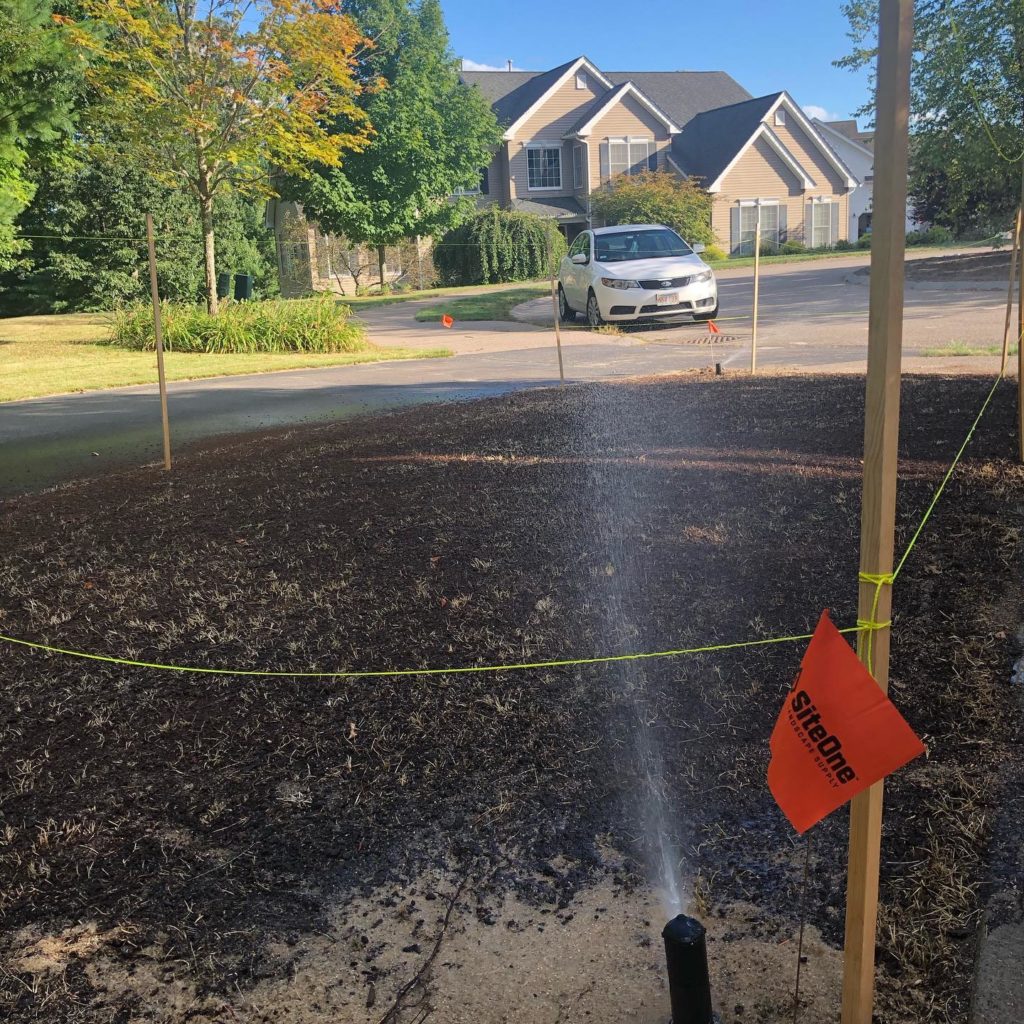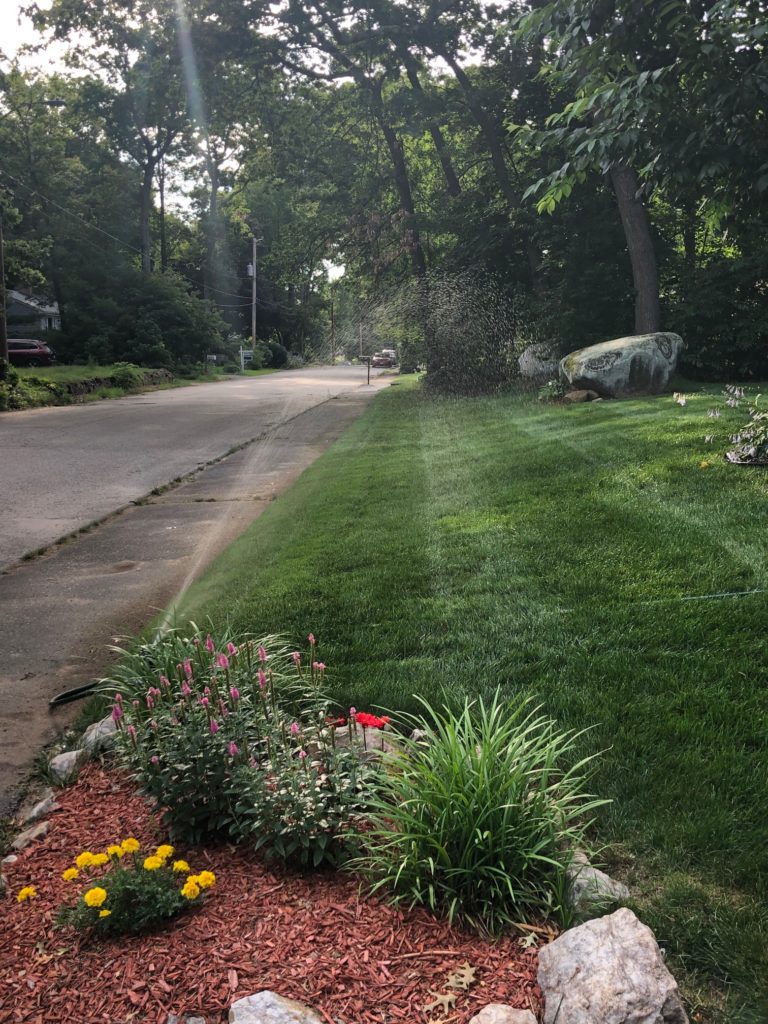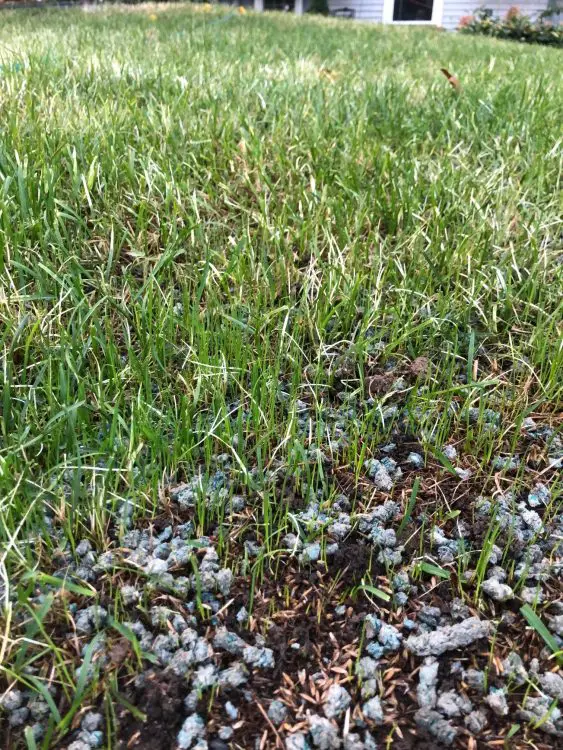How often does new grass seed need to be watered? This is a lawn care question with an answer that depends on a lot of different factors, like the current state of your lawn—whether you’re renovating it or overseeding a lawn—whether the yard is flat or sloped, the type of grass seed you’ll be using, and the season in which you are planting it. Even sod will have different watering needs depending on these factors. To learn more, read below for a guide on how to get your grass seed off to a great start.
Watering Bare Dirt
Bare earth happens for a variety of reasons. Perhaps you’ve recently re-sloped your lawn, undergone excavations, or completed construction. These patches can also crop up when something causes grass to die in spots. Keeping new grass seed well watered on bare earth means not allowing the earth to dry out—and it’s easier than you think!
To start, once you’ve spread new grass seed over loose soil, you’ll want to mulch the grass seed with a one to a two-inch thick layer of straw or another suitable covering. Not so much that it prevents germination, but enough to protect the new grass seed from wildlife and slow down evaporation. Water once or twice daily for two to three weeks to keep the soil and seed moist, but not soggy. The length of time you will need to run the sprinklers depends on the weather. Sunny, windy, and hot days will cause more evaporation, so you’ll want to run sprinklers for longer.


Watering an Existing Lawn
The process of applying grass seed to an existing lawn to help it grow into a fuller, thick lawn is referred to as overseeding. As with bare earth, you’ll need consistent moisture, but not quite as much. Plan to water lawn areas sowed with new grass seeds lightly once or twice per day for the first four days. After that, when the new grass seedlings start to germinate, you can water a little more heavily for about five days. From then on, only water as needed if you detect wilting.


Watering New Sod
New sod requires a lot of care to help it grow into a lush, healthy lawn, but it has advantages over grass seed. Because sod comes with fully developed root systems and foliage, you’ll get the look of a new lawn as soon as it’s installed. But, you’ll need to give it lots of water. If possible, water between four and six times per day for five or six minutes per session to keep soil moisture levels consistent throughout the day. This may need to be done for up to two months while the sod establishes itself. If work or time constraints prevent this type of watering schedule, instead water twice per day, in the morning and afternoon, for twenty minutes per session.
What to Use to Cover Grass Seed?
There are several options that you can use to cover freshly spread grass seed over bare earth. Hay and straw are the most popular options because they’re inexpensive and they effectively cover a lot of ground. The downside is that hay and straw usually contains at least a few weed seeds. You may want to use it in conjunction with a pre-emergent herbicide to prevent weed growth.
Peat moss is another option. It doesn’t contain weed seeds, but it can prove to be quite messy. However, peat moss is excellent for keeping soil moist and improving soil health.
How Much New Grass Seed Do You Need?
Determining the amount of new grass seed you’ll need is another choice that will depend on a lot of different factors. Check grass seed ranges to find warm-season grass or cool-season grasses that grow best in your area, and make sure to follow package instructions for the best result. Most bags of seed will cover about 250 to 400 square feet per pound—and these numbers account for seeding on bare earth. You’ll use less seed when overseeding.
You’ll also use more or less seed depending on the seed size. For example, Kentucky Bluegrass is a smaller grass seed than Turf Type Tall Fescue, which means more seeds per pound and more coverage with Kentucky Bluegrass. Some grass seeds—like Kentucky Bluegrass—are also rhizomatic, which means they’ll fill in and cover more area than rye or fescue. If you’re using a product like Pennington Slopemaster, which is good for erosion control and seeding difficult to manage areas, one large bag will cover about 600 square feet.
Grass Seed Watering FAQs
Should I water grass seed every day?
Yes, until the grass is well-established or until it goes dormant (if planted in the fall), you will need to water it daily.
How long does the grass seed germination process take?
How long does it take for new grass seed to establish?
It usually takes three to four weeks for grass seed in a newly seeded lawn to be established enough that you can mow it. Sod can take up to two months to fully establish.
What is the best way to water new grass seed?
For lawn irrigation, a simple lawn sprinkler works best. You can invest in a sprinkler system if your lawn will need to be watered regularly throughout the year. However, if you don’t have a normal irrigation schedule, only watering when establishing new grass seed, a cheap lawn sprinkler will work just as well!
There is a lot to consider when you’re planting new grass seed or sod! Use this as your guide when lawn planting to make sure your new grass gets the healthiest start possible.

